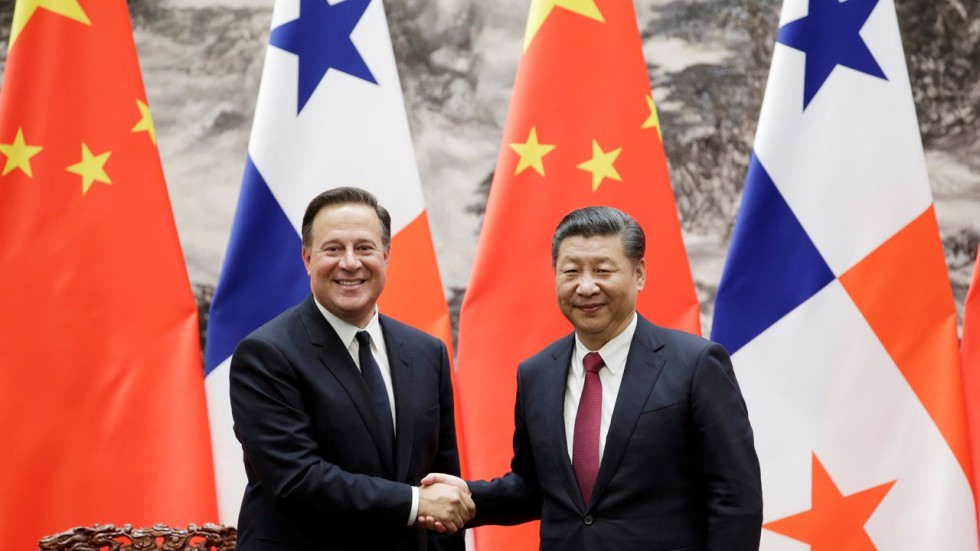China and Panama began talks over a free trade pact in July, only one year after the two nations established diplomatic relations. The first round of negotiations took place in Panama City where the two sides exchanged ideas about topics related to the pact and the talks progressed well. The second round of talks is scheduled to take place in Beijing soon.
The push for free trade talks shows a common desire to develop stable economic ties over the long term, which would benefit both sides.
In the case of Panama, a free trade deal would give it access to the huge and stable Chinese market, substantially increasing the chances of exporting Panamanian products to China and thus helping to boost Panama’s trade. The main export items of the Central American country consist of seafood and cash crops such as bananas and cane sugar. There is great potential for exports of these products to the Chinese market as China’s food consumption is rising.
It’s worth noting that Panama’s merchandise trade has posted huge deficits for years. Last year, the nation recorded total trade of $34.38 billion, with $12.47 billion in exports and $21.91 billion in imports, meaning a deficit of nearly $10 billion. A trade pact with China, Panama’s second-largest trading partner globally and the No.2 user of the Panama Canal, would help in reducing the trade deficit.
The Colon Free Trade Zone, one of the mainstays of Panama’s economy, could gain tremendous new opportunities. The zone, which is located close to the Atlantic entrance to the Panama Canal, is a major exporting hub and China has always been the top supplier of goods to the zone. If successfully concluded, the China-Panama trade pact would certainly diversify China’s supply portfolios, giving the Colon zone a boost to further explore the European, Asian and Latin American markets. This would eventually beef up Panama’s economy.
Furthermore, in the process of signing the trade deal with China, Panama is expected to flesh out the terms concerning the approval of re-exports, thereby facilitating entrepot trading of Chinese products in the region and solidifying Panama’s status as a global logistics hub. Panama has a thriving services sector, which now accounts for nearly 80 percent of the country’s GDP and the nation’s financial sector is also highly developed. If the trade deal is finalized, Panama will be expected to serve as a vital point of convergence between China and Latin America in terms of logistics, movement of people, and capital flows as Chinese businesses will want to invest in Panama.
Meanwhile, the tourism sector is also an important pillar of Panama’s economy and the trade deal will give immense impetus to the nation’s tourism sector as well.
Talks over the trade deal suit China’s free trade strategy as well. As China’s economy grows stronger, the country is opting for a more active free trade strategy by pushing for open and transparent regional free trade arrangements, while ensuring the validity and authority of the global multilateral trade system.
Although there’s a long distance to cover, Latin America has become one of China’s vital sources of energy and resources. Thus far, China has inked free trade agreements with three Latin American countries – Chile, Peru, and Mexico. Although it’s been just one year since China and Panama established relations, frequent high-level exchanges between the two countries have paved a solid groundwork for closer economic and trade ties.
The China-Panama trade deal, if successfully completed, would surely provide yet another breakthrough for China-Latin America cooperation.
China’s exports to Panama mostly comprise light industry products, textiles, fuel oil, rubber, computers and communications products, while the country’s imports from Panama include fishmeal, scrap metal, cement and leather. This points to complementarity between the two countries in the merchandise trade. Chinese customs data shows that China’s trade with Panama totaled $6.69 billion in 2017, with China’s exports to Panama reaching $6.63 billion and its imports at $62 million, a year-on-year increase of 2.8 percent, 2.4 percent and 67.6 percent, respectively. This suggests there is substantial room for China to increase its imports of Panamanian products. Although Panama’s market is relatively small for China, building a free trade zone with Panama would serve to expand the sources of China’s imports, therefore helping with China’s trade remodeling. More importantly, the trade deal would provide an institutional basis for bilateral trade growth and ensure the stable development of bilateral relations.
The author, Bi Jing is an associate research fellow at the Chinese Academy of International Trade and Economic Cooperation. bizopinion@globaltimes.com.cn
